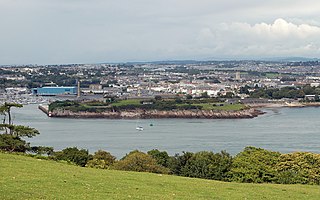
East Stonehouse was one of three towns that were amalgamated into modern-day Plymouth, in the ceremonial county of Devon, England. West Stonehouse was a village that is within the current Mount Edgcumbe Country Park in Cornwall. It was destroyed by the French in 1350. The terminology used in this article refers to the settlement of East Stonehouse which is on the Devon side of the mouth of the Tamar estuary, and will be referred to as Stonehouse.

Fort Pitt is a Napoleonic era fort on the high ground of the boundary between Chatham and Rochester, Kent.
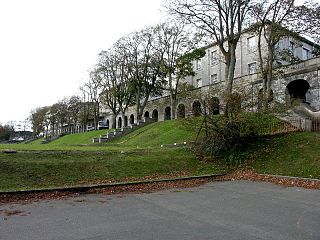
Stoke Military Hospital was an army medical facility in Plymouth, England.

The Royal Victoria Hospital or Netley Hospital was a large military hospital in Netley, near Southampton, Hampshire, England. Construction started in 1856 at the suggestion of Queen Victoria but its design caused some controversy, chiefly from Florence Nightingale. Often visited by Queen Victoria, the hospital was extensively used during the First World War. It became the 28th US General Hospital during the invasion of mainland Europe in the Second World War. The main building – the world's longest building when it was completed – was entirely demolished in 1966, except for the chapel and former YMCA building, which still survive. The extensive outbuildings, which once occupied a vast acreage of land to the rear of the main building, finally succumbed in 1978. The site of the hospital can be seen and explored in Royal Victoria Country Park.

The Royal William Victualling Yard in Stonehouse, a suburb of Plymouth, England, was the major victualling depot of the Royal Navy and an important adjunct of Devonport Dockyard. It was designed by the architect Sir John Rennie and was named after King William IV. It was built between 1826 and 1835 and occupies a site of approximately 16 acres (65,000 m2) being half of Western Kings, north of Devil's Point.

The Royal Infirmary of Edinburgh (RIE) was established in 1729, and is the oldest voluntary hospital in Scotland. The new buildings of 1879 were claimed to be the largest voluntary hospital in the United Kingdom, and later on, the Empire. The hospital moved to a new 900 bed site in 2003 in Little France. It is the site of clinical medicine teaching as well as a teaching hospital for the University of Edinburgh Medical School. In 1960 the first successful kidney transplant performed in the UK was at this hospital. In 1964 the world's first coronary care unit was established at the hospital. It is the only site for liver, pancreas, and pancreatic islet cell transplantation in Scotland, and one of the country's two sites for kidney transplantation. In 2012, the Emergency Department had 113,000 patient attendances, the highest number in Scotland. It is managed by NHS Lothian.

The Royal Infirmary was a hospital in Upperthorpe, Sheffield, South Yorkshire, England.

A Royal Naval Hospital (RNH) was a hospital operated by the British Royal Navy for the care and treatment of sick and injured naval personnel. A network of these establishments were situated across the globe to suit British interests. They were part of the Royal Naval Medical Service. The British Army equivalent was a Military Hospital, and in the 20th century a number of RAF Hospitals were also established.

The Royal Hospital Haslar in Gosport, Hampshire, which was also known as the Royal Naval Hospital Haslar, was one of Britain's leading Royal Naval Hospitals for over 250 years. Built in the 1740s, it was reputedly the largest hospital in the world when it opened, and the largest brick-built building in Europe.

Dame Doris Winifred Beale, was a British military nurse and nursing administrator who served as Matron-in-Chief of Queen Alexandra's Royal Naval Nursing Service from 1941 to 1944 during the Second World War. In the 1944 Birthday Honours she was appointed Dame Commander of the Order of the British Empire (DBE), a first in the Royal Naval Nursing Service.
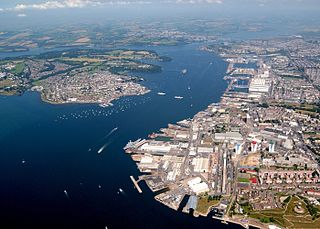
His Majesty's Naval Base, Devonport is one of three operating bases in the United Kingdom for the Royal Navy and is the sole nuclear repair and refuelling facility for the Royal Navy. The largest naval base in Western Europe, HMNB Devonport is located in Devonport, in the west of the city of Plymouth, England.
Surgeon Vice Admiral Ian Lawrence Jenkins was a Royal Navy medical officer and former Surgeon General of the British Armed Forces.
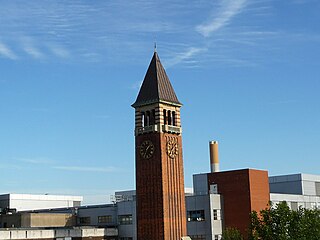
Medway Maritime Hospital is a general hospital in Gillingham, England within the NHS South East Coast. It is run by Medway NHS Foundation Trust. It is Kent's largest and busiest hospital, dealing with around 400,000 patients annually. It was founded in the early 1900s as a Royal Naval Hospital for naval personnel at Chatham Dockyard and the nearby Royal Naval Barracks.

Surgeon Rear Admiral Lionel John Jarvis, CBE, KStJ, QHS, FRCR, DL is a British consultant radiologist. He was previously the Surgeon General of the Royal Navy and the Assistant Chief of the Defence Staff for Health. He served as the Royal Navy's Chief Medical Officer and Medical Director General (Naval) until April 2012. He was appointed as an Honorary Surgeon to the Queen (QHS) in 2006. He was both the Prior of England and the Islands of the Most Venerable Order of the Hospital of Saint John of Jerusalem and the Chair of St John Ambulance from 2016 to 2021.

The Portland Royal Naval Hospital was a naval hospital on the Isle of Portland, Dorset, England. Portland Harbour was a naval anchorage and fuelling facility, which grew to become a Naval Base and Royal Dockyard. A RN Hospital was initially established in the dockyard area in the 1870s, which served until it was replaced by a new purpose-built naval hospital, located close to Castletown, at the beginning of the 20th century. It closed in 1957, when it was handed over to the National Health Service, which still runs the hospital. It is now known as Portland Community Hospital.

Stonehouse Barracks, or RM Stonehouse, is a military installation at Stonehouse, Plymouth. It is the home of 3 Commando Brigade and referred to by commandos as 'the spiritual home of the Royal Marines'.
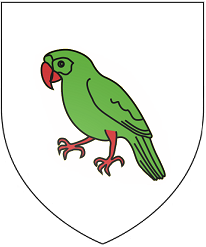
Thomas Parlby (1727–1802) Stone Hall, Stonehouse, in Plymouth "the big house overlooking Stonehouse Pool", was a civil engineering contractor described in his obituary in the Gentleman's Magazine as "Master Mason of HM Docks".

The Royal Marine Depot, Deal was a military installation occupied by the Royal Marines and located in an area between Lower Walmer and South Deal in Kent. The Depot was first established in 1861, occupying part of the Royal Naval Hospital. In 1868 the Depot expanded and took over Walmer Barracks ; it was then generally referred to as the Royal Marine Depot, Walmer, but by the early 20th century it was officially listed as the Royal Marine Depot, Deal.
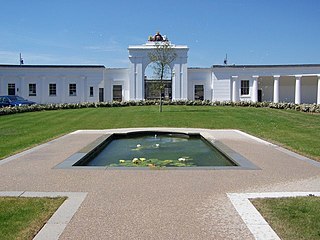
Royal Clarence Yard in Gosport, Hampshire, England was established in 1828 as one of the Royal Navy's two principal, purpose-built, provincial victualling establishments. It was designed by George Ledwell Taylor, Civil Architect to the Navy Board and named after the then Duke of Clarence. The new victualling yard was developed on approximately 20 hectares of land, some of which was already in use as a brewing establishment at Weevil on the west shore of Portsmouth Harbour, to the north of Gosport.

The Royal Sea Bathing Hospital in Margate, Kent was founded in 1791 by Dr John Coakley Lettsom, a Quaker physician and philanthropist, for the treatment of scrofula.






















